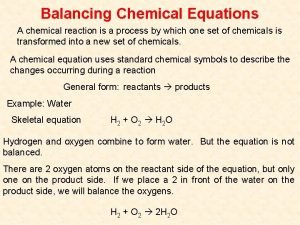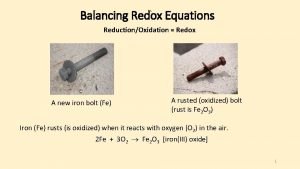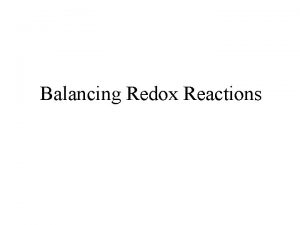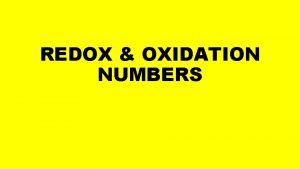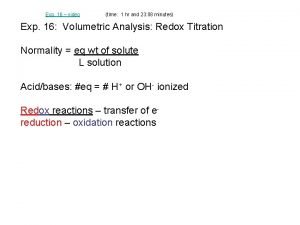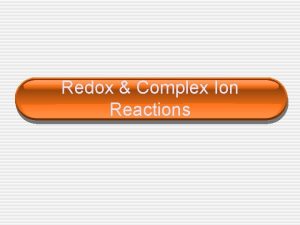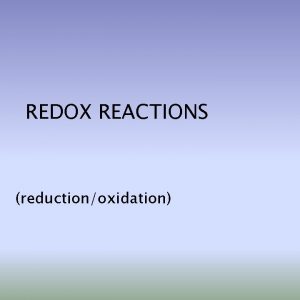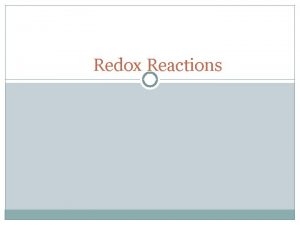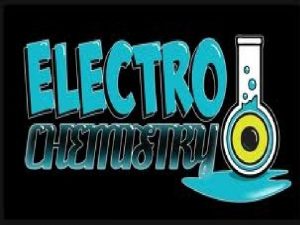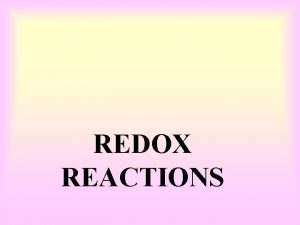REDOX REACTIONS Redox reactions are electron exchange reactions









- Slides: 9

REDOX REACTIONS

Redox reactions are electron exchange reactions. These are also called oxidation - reduction reactions. In such reactions, it is generally necessary to know the oxidation numbers of each element that reacts to find the element from which the electron is given and received.

Finding Oxidation Numbers: To decide the oxidation number of an element, we start with two simple rules: 1. The oxidation number of an element not associated with other elements is zero. 2. The sum of the oxidation numbers of all atoms in a species is equal to the total charge of that species.

A redox reaction is a reaction in which the oxidation numbers vary. The species causing oxidation in redox reactions is called oxidizing agent. Oxygen and chlorine are two of them that we often encounter. Oxidizing agents can be elements, ions or compounds.

Electrons cannot be destroyed in a reaction or cannot be created from nothing. So when one species is oxidized, another species that forms this reaction must be reduced. Indeed, all of the electrons lost in an oxidation step must be recovered in a reduction step. Because the electrons are charged, we can be sure that an equation satisfies this requirement where the total charge of the reactants is equal to the total charge of the products.

For example, consider the equation in which copper is oxidized to silver ions and copper (II) ions:

The balanced reaction is as follows.

Experiment A: Put 2 m. L of 0. 1 M KMn. O 4 solution into a test tube, add 4 -5 drops of 6 M H 2 SO 4 solution. Then slowly add 5 m. L of 0. 2 M Fe 2+ solution to the test tube and write down your observations.

Experiment B: Take 2 m. L of 3% H 2 O 2 solution into the test tube, add 4 -5 drops of 6 M H 2 SO 4 solution. Then add 0. 1 M KMn. O 4 solution to the test tube slowly until the color of KMn. O 4 disappears and write down your observations.



